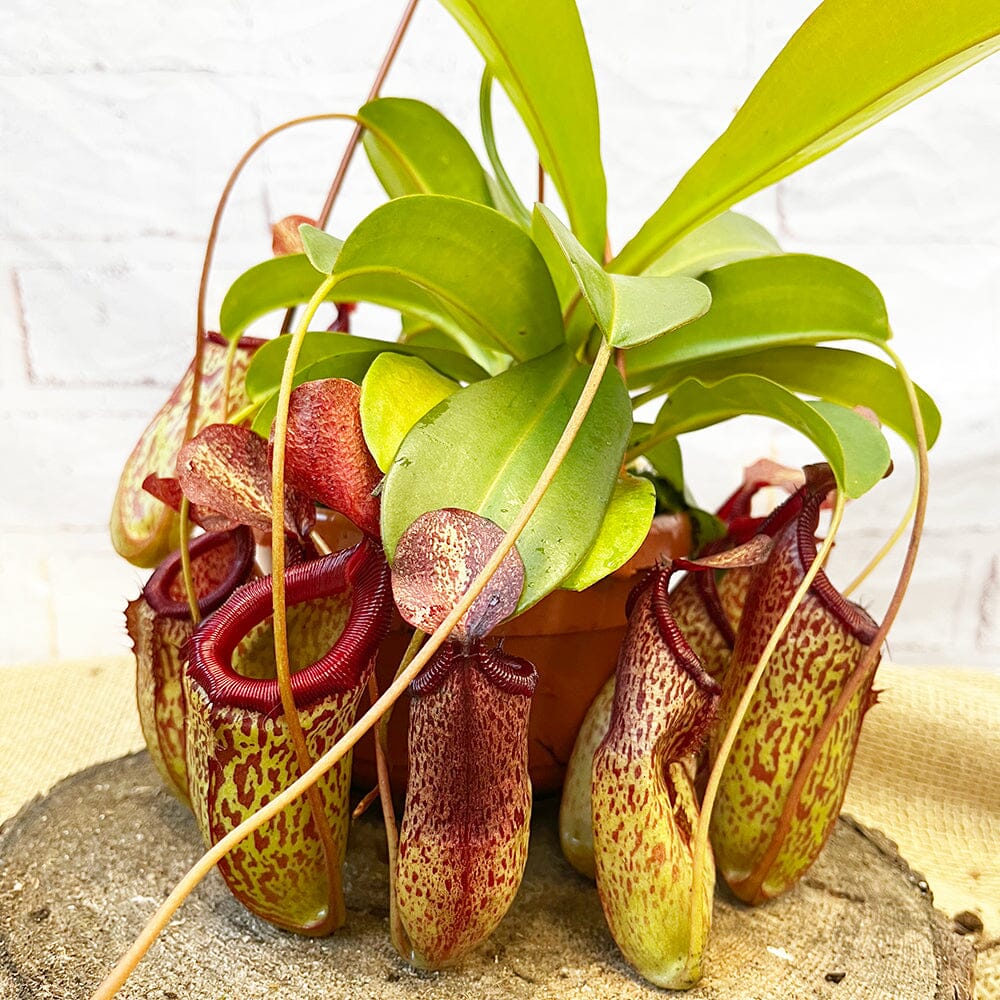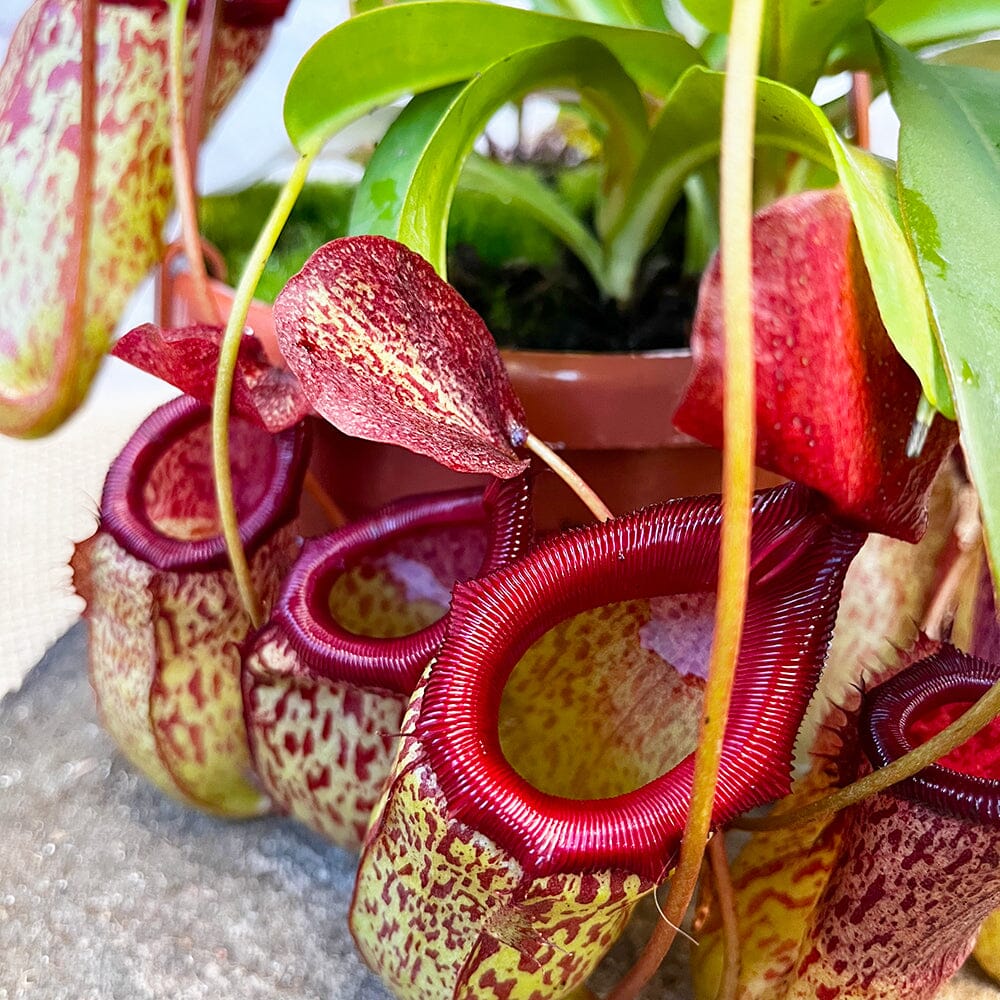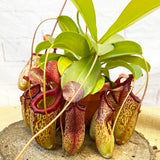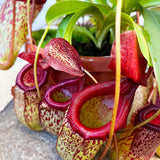New
30 - 40cm Nepenthes Sam in Hanging Pot Monkey Jars 14cm Pot House Plant
Nepenthes Sanguinea, commonly known as Nepenthes 'Sam', is a tropical pitcher plant known for its striking and unique pitchers. Here's a detailed care guide for this fascinating plant:
Description
- Appearance: Nepenthes 'Sam' displays remarkable pitchers, which are the plant's modified leaves designed to trap insects. These pitchers are often brightly coloured, ranging from green, red, to orange, and can grow quite large. The plant itself has a climbing or trailing habit, with long tendrils extending from the tips of the leaves, each ending in a pitcher.
- Pitchers: The pitchers are divided into two parts - the upper and lower pitchers. The lower pitchers, which form at the base of the plant, are typically larger and more robust, while the upper pitchers, appearing on the higher parts of the vine, are often more slender and brightly coloured.
- Flowers: It blooms with small, inconspicuous flowers on tall, slender spikes. The flowers can be male or female, as Nepenthes are dioecious plants (having separate male and female plants).
Care Guide
-
Lighting: Nepenthes 'Sam' thrives in bright, indirect sunlight. Direct sunlight can scorch the leaves and pitchers, so it’s best to provide filtered light. A north or east-facing window is ideal.
-
Temperature and Humidity: This species prefers warm temperatures between 20°C to 30°C during the day and slightly cooler at night. It also requires high humidity, ideally above 60%. In drier environments, using a humidifier or placing the plant in a terrarium can help maintain adequate humidity levels.
-
Watering: Water generously, keeping the soil consistently moist but not waterlogged. Use rainwater or distilled water, as tap water can contain minerals that may harm the plant. The pot should have good drainage to prevent root rot.
-
Soil: Use a well-draining soil mix, ideally a mixture of sphagnum moss and perlite. Avoid standard potting soil, as it can be too nutrient-rich for these plants.
-
Feeding: Nepenthes 'Sam' is a carnivorous plant and gains nutrients from the insects it captures. Supplemental feeding is not necessary, but if you choose to feed your plant, use live or freeze-dried insects. Avoid fertilisers, as they can damage the plant.
-
Pruning: Prune dead or yellowing leaves and pitchers to encourage new growth. This also helps the plant focus its energy on producing new, healthy pitchers.
-
Repotting: Repot every two to three years to refresh the soil. Be gentle with the roots during repotting.
-
Propagation: Propagation is typically done through stem cuttings. Place the cutting in a moist, well-draining medium and maintain high humidity until roots develop.
Common Issues
- Pitcher Formation: If your plant is not producing pitchers, it may be due to insufficient light, low humidity, or inadequate water.
- Brown or Scorched Leaves: This can be a sign of too much direct sunlight or low humidity.
- Root Rot: Overwatering or poor drainage can lead to root rot, which is fatal for the plant.
By following these care tips, your Nepenthes 'Sam' should thrive, providing a fascinating and exotic addition to your plant collection. Remember, patience is key with carnivorous plants, as they can be slow to adjust to new environments.
Check out our YouTube video to see exactly how we pack for safe delivery.
- Plants are supplied in plastic nursery pots unless stated in the product title.
- Plants are not for consumption unless stated as edible.
- Plant heights can fluctuate +/- 10%.
- Our plants are kept at our tropical nursery in Yorkshire where we maintain an average temperature of 18c.


































